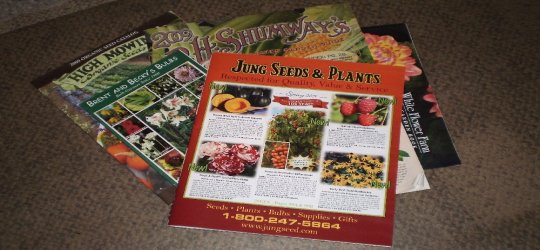|
 December 31, 2008 December 31, 2008 
Personal is as "Local" as One Can Get
Reported in the Denver Post this past November 23, a headline read "Down on the farm, a frenzy over free food". This accurately reflects what happens in bad economic times when a kind and generous farm family, the Millers, invite people to gather surplus produce, and 40,000 people show up to haul away as much as they can get. In a single day a 600-acre farm is wiped clean. Similarly, a give away of Thanksgiving boxes, donated by the Jeffco Action Center, resulted in 5,141 people getting food, the highest number in 40 years.
Ever since Alice Waters of the famous Chez Panisse Restaurant founded the Edible Schoolyard in 1995, schools across the country have been introducing students, from pre-schoolers to high schoolers, to gardening and growing their own food for the lunchroom. Every aspect of the curriculum can be woven into the fabric of a vegetable garden.
Add to these signs of the times, the sticker shock being experienced in supermarkets across the USA, and, simultaneously, reports of an obesity epidemic in our schools. We are being reminded with ever increasing frequency that 50% of what we consume should be fresh fruits and vegetables.
In spite of this, Riverside County, CA newspaper, Dec. 14, 2008 reported that Barbara Wormser, president of Inland Harvest, a surplus food distributor to sixty different agencies in Riverside and San Bernadino said if she had to single out anything, it would be fruits and vegetables. "They're the first thing people stop buying if they have limited income," she said. "We are especially happy when we get lots of fruits and vegetables. That helps balance the diets of people who just buy food to fill their stomachs."
Remember the expression, "You are what you eat"? This didn't just appear in the '60s. Its history is much older. Good eating habits have always been tied to good health. Our renewed emphasis on sustainability, greener practices, growing more of our own food, consuming locally grown produce, all of these help us to focus on what the real essence of promoting biological diversity is all about.
Place a plant in the ground. Consider its evolutionary background, the ecosystem into which it is placed to grow and expected to thrive, its species, and finally, its genetic make-up. It is how this complex interplay unfolds that will determine the amount of reward the grower receives. The first reward that comes to mind is for the physical (nutritional) wellbeing. But, don't overlook the emotional, aesthetic and spiritual benefits.
Struggling in a shaky economy pushes us forward to take risks that are personal, not financial. If ever there were a time to plan on growing some of your edibles, opt this coming year for providing yourself healthy food, exercise, green space and a revitalized environment. There is a buoyancy and freedom to be found in this activity on even the most elementary level.
Hundreds of thousands of fellow Americans are growing their own. A Garden Writers Assn. survey recently stated that 39% of Americans with yards grow some of their own food. I know plenty of others that grow in pots and planter boxes on terraces and decks.
I would like to suggest a bifurcated approach to your winter surmising about what it is you might grow. An indoor herb garden, of even the most modest of beginnings, may be started ASAP in a south-facing window getting direct sunlight. Small potted herbs are available for between two and three dollars in many stores. Protect them from the cold on their way home. Warm indoor temperatures work great with the sun's low position in the sky.
Even if you plant a single herb, it will be your personally grown herb. Every measure of your being will be in it. Grow two and double your pleasure and feeling of self worth. Indoor herb gardens aren't especially difficult or complicated. I'll tell you more about this in the coming weeks.

Frigid outdoor temperatures act as a spirited incentive to comb through the growing assortment of seed catalogues arriving with regularity. The other branch of my suggested approach is to consider, while all is white and frozen, that which will return year after year. The catalogs will have more offerings than you can imagine. Perennial vegetables and herbs are easy to establish, provide each and every year, and require less maintenance than annuals. This, too, I'll elaborate on in an upcoming column.
In the meantime, I wish each and every one of you a new year of peace, harmony, happiness and balance.
From The Garden of Ed. Submitted for publication in The Towne Crier on December 31, 2008
© 2008 Ed Mues. All Rights Reserved.

eMail:
eGarden@MountainAir.us

|

